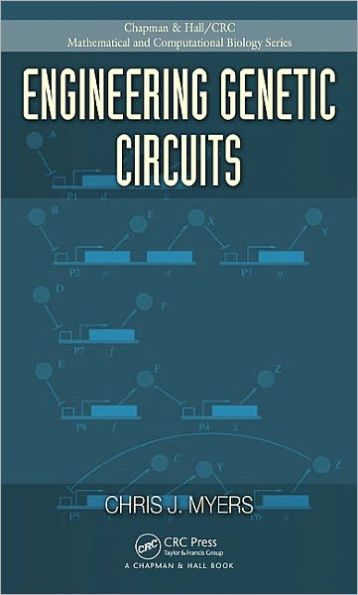Focusing on genetic regulatory networks, Engineering Genetic Circuits presents the modeling, analysis, and design methods for systems biology. It discusses how to examine experimental data to learn about mathematical models, develop efficient abstraction and simulation methods to analyze these models, and use analytical methods to guide the design of new circuits. The text clearly shows how the success of systems biology depends on collaborations between engineers and biologists.
Features
Introduces relevant biology and biochemistry for readers with an engineering background
Covers key methods for modeling and analyzing genetic circuits, such as differential equations and stochastic analysis
Describes abstraction methods, which can substantially improve the efficiency of analyses
Uses the lysis/lysogeny decision circuit of phage λ as an example throughout to help illustrate the various methods
Presents an introduction to the emerging area of synthetic biology
Offers iBioSim software and other material on the author's website
Focusing on genetic regulatory networks, Engineering Genetic Circuits presents the modeling, analysis, and design methods for systems biology. It discusses how to examine experimental data to learn about mathematical models, develop efficient abstraction and simulation methods to analyze these models, and use analytical methods to guide the design of new circuits. The text clearly shows how the success of systems biology depends on collaborations between engineers and biologists.
Features
Introduces relevant biology and biochemistry for readers with an engineering background
Covers key methods for modeling and analyzing genetic circuits, such as differential equations and stochastic analysis
Describes abstraction methods, which can substantially improve the efficiency of analyses
Uses the lysis/lysogeny decision circuit of phage λ as an example throughout to help illustrate the various methods
Presents an introduction to the emerging area of synthetic biology
Offers iBioSim software and other material on the author's website

Engineering Genetic Circuits
306
Engineering Genetic Circuits
306Related collections and offers

Product Details
| ISBN-13: | 9781420083255 |
|---|---|
| Publisher: | CRC Press |
| Publication date: | 04/19/2016 |
| Series: | Chapman & Hall/CRC Mathematical and Computational Biology , #26 |
| Sold by: | Barnes & Noble |
| Format: | eBook |
| Pages: | 306 |
| File size: | 4 MB |
